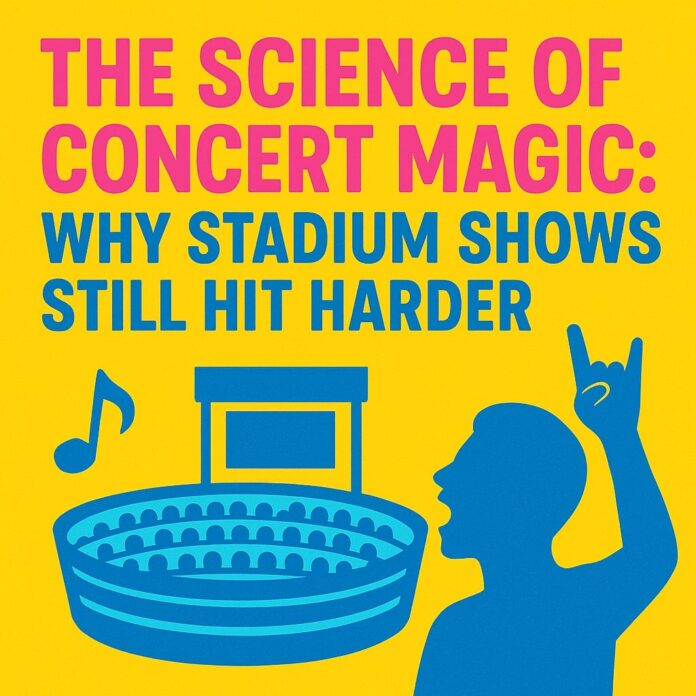
The Science of Concert Magic: Why Stadium Shows Still Hit Harder
Streaming numbers are bigger than ever, but nothing compares to the energy of a live concert. Stadium shows in particular continue to reign supreme—not just because of the scale, but because of what they do to our brains and emotions.
The Neuroscience of Live Music
When thousands of people sing in unison, something extraordinary happens: their brains sync. Shared rhythms, flashing lights, and the anticipation of a beat drop trigger powerful neurological responses. Dopamine fuels excitement, oxytocin builds feelings of connection, and endorphins create the euphoric “high” that fans describe long after the show.
Why Stadiums Are Unique
-
Collective energy: Cheering with 60,000 other fans amplifies emotional highs in ways headphones never can.
-
Sensory overload: From light shows to pyrotechnics, modern concerts stimulate multiple senses, deepening memory and impact.
-
Moments of unity: Singing lyrics together builds belonging in an increasingly disconnected world.
What Artists Can Learn
-
Design experiences, not just sets: Think about lights, visuals, and pacing as much as your setlist.
-
Create moments of togetherness: Pause to let the crowd sing, build tension before drops, or introduce interactive chants.
-
Small-scale application: You don’t need a stadium—apply these principles in clubs, indie venues, or even virtual shows.
The Takeaway
Concerts endure because they meet a human need for connection, joy, and shared experience. In 2025, whether you’re performing for 50 or 50,000, the goal is the same: give your audience a memory that lives not just in their ears, but in their hearts and minds.





















 🔥 Limited Time: Get 55% OFF All Plans - Ends in:
🔥 Limited Time: Get 55% OFF All Plans - Ends in: